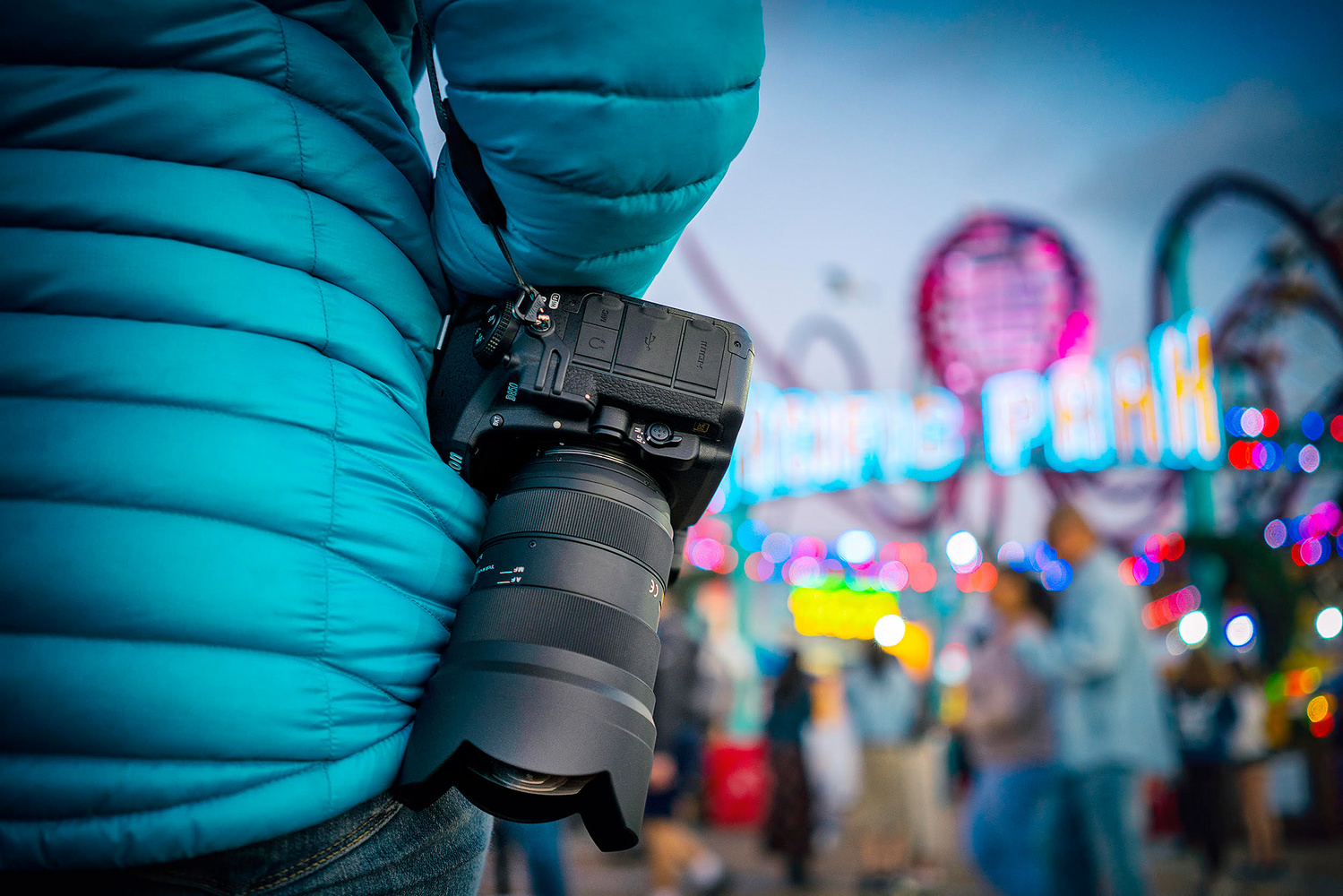Today, Tokina announced the next addition in their premium "Opera" lens line, the super wide-angle zoom Tokina Opera 16-28mm f/2.8 FF for full-frame Canon and Nikon DSLRs.
This new zoom lens is a price-friendly $699, but the wide constant aperture and improved autofocus mechanism speaks premium. The Tokina Opera 16-28mm f/2.8 FF uses a new Silent Drive module with GMR magnetic autofocus sensors which the company promises is "faster, smoother, and quieter autofocus than the previous generation."
Optically, the Tokina Opera 16-28mm f/2.8 FF contains 15 elements in 13 groups including 3 aspherical and 3 low-dispersion elements. Tokina claims the front element "provides super-low distortion and low light fall-off" which benefits architectural, landscape, and astrophotographers. Unfortunately, due to the bulbous shape of the large front element and fixed lens hood, there are no filter threads.
Manual focusing with the Opera 16-28mm utilizes what Tokina calls a One-Touch Focus Clutch Mechanism. This means that users can physically snap back the focus ring to engage a manual focus mode that has true hard stops on both ends of the focus range like traditional lenses.
Minimum focusing distance is 11 inches (0.28 meters) which equates to a macro reproduction ratio of 1:5.26. The lens sports nine aperture blades.

Measured up, the length of the Tokina Opera 16-28mm f/2.8 FF is 5.25 inches (133.5 millimeters) for the Nikon version and 5.35 inches (136 millimeters) for the Canon version. The Nikon copy weighs 2.07 pounds (940 grams) whereas the Canon is 2.09 pounds (950 grams).
Tokina states that these lenses carry an exclusive three-year U.S.A. warranty.
The Tokina Opera 16-28mm f/2.8 FF lens will be available in Canon EF and Nikon F mounts and cost $699. Preorders will start today with lenses being shipped on March 15.









Why is the front element so bulbous when it's only 16mm?
Pretty much every full frame ultrawide for DSLRs with fixed 2.8 aperture has a bulbous front, what are you so surprised?
Tamron's 15-30mm 2.8, Tokina's older 16-28mm f2.8, both Nikon's and Sigma's 14-24 2.8, Samyang 14mm 2.8, ... Bulbous front element is standard.
Oh, I see. you must be a mirrorless user. 🙄
I am a mirrorless user now, but I was a Nikon DSLR user before that and I don't recall a 16-35 other than the f/4 G which had a 77mm front filter thread so I would have assumed that like that lens, you'd be able to make a 16-35 in f/2.8 without a bulbous front element if you just used a larger lens with a larger filter thread. If they were going to have a bulbous front element anyway, why not go 14-24 like Sigma and Nikon have?
Also, just to make sure I wasn't crazy, I just looked up Canon's offerings and it seems that they have a 16-35mm f/2.8L II lens with an 82mm front filter thread... So it certainly looks like it's possible not to have a bulbous element that makes you unable to attach screw-in filters.
The nikon 16-35 f4G has a flat front element because it's a f4. Meanwhile Tamron's f2.8-4 17-35 is variable aperture. From what I'm seeing, only canon has a flat front element for an ultrawide 2.8 zoom. Pretty much everyone else has a bulbous front.
Nikon's older AFD 17-35 2.8 does have a flat front element but that lens is known to be not sharp from middle third onwards and gets really bad at the corners.
I'm pretty sure the optical formula are different and bulbous one is preferred.
I wonder if the F-Mount compatibility was the limiting factor here simply because I can't imagine a company choosing a bulbous front element unless they absolutely had to. Sony also has a 16-35mm f/2.8 for their A-Mount that uses a 77mm filter thread.
Looks almost same like older version, i am not sure if people want 1kg lens with bulbous front element
If this is an excellent optical performer it is a sensational and exciting announcement. If it is mediocre then the announcement is just noise that doesn’t matter.
Thay said, I do like the idea that an announcement like 25 days before release is nice. Rather than the more common: check out this cool new lens that wont hit shelves for a half a year.
For DSLRs? Does that mean it won't work on my FSLR?
For Nikon, you might be able to mount it, but if it uses an electronically controlled aperture, then you're pretty much stuck using it wide open.
I look forward to finally dropping my Canon 16-35 II and replacing it with this lens. Having been fortunate to handle the lens a bit, given that it has a bulbous front element I was very surprised and see how it handles distortion.
same exact lens that was released in 2010 but a new look and minor tweaks and a price bump
How do you know?
do your own research